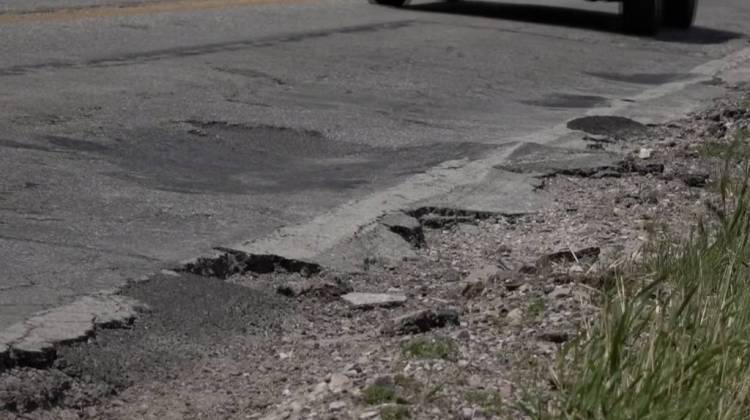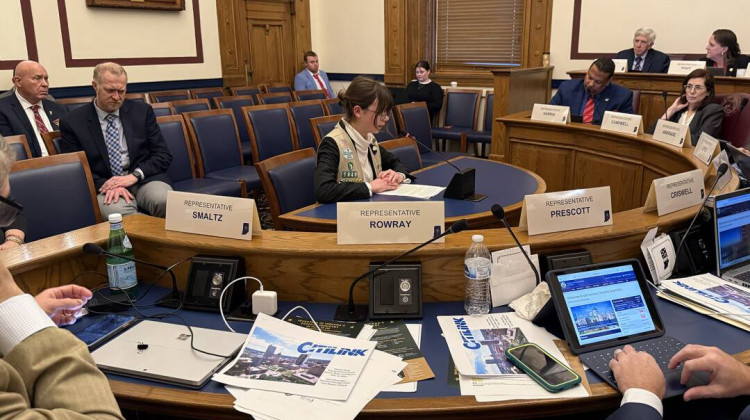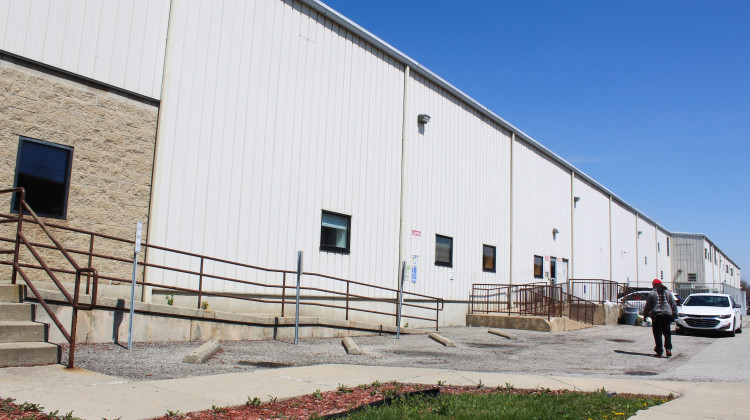
The City of Fort Wayne and the Northern Indiana Passenger Rail Association held a news conference Monday in Fort Wayne’s Baker Street Station.
Zach Bernard/WBOIThe City of Fort Wayne and the Northern Indiana Passenger Rail Association held a news conference Monday in Fort Wayne’s Baker Street Station to announce initial federal and state support for a new passenger rail train line.
A passenger train hasn’t stopped in Fort Wayne since December, 1990.
Fort Wayne councilman Geoff Paddock has advocated for the return of passenger rail service to Northeast Indiana since, by his estimation, 1998. Ten years later, he helped form NIPRA, a group of volunteers whose primary goal was to bring back passenger rail service, somehow.
After decades of lobbying officials locally and statewide, a proposed rail line has been greenlit by the Federal Railroad Administration and Indiana Department of Transportation to undergo an Alternatives Analysis and Public Input study, which would officially begin the project.
“Moving forward with an environmental assessment is tantamount to stating that transportation officials in Washington and in Indianapolis are likely to recognize and promote the next line that would connect millions of people with passenger rail service,” said Paddock.
The proposed rail line is known as the Chicago to Fort Wayne-Columbus corridor.
A train departing from Chicago would go east and pass through Gary, Valparaiso, Plymouth and Warsaw before stopping in Fort Wayne. From here, the train would go into Ohio, through Lima, Kenton, Marysville and eventually, Columbus.
Mayor Tom Henry was on hand for the announcement. His first term as mayor coincided with the formation of NIPRA. He says when Paddock first expressed a desire to bring passenger rail service back to Northeast Indiana, he was skeptical.
“They moved out of Fort Wayne primarily because they felt more money could be made in freight than in passenger service. How are you going to get them back, and why would I want them back,” Henry said.
But, in the years since, NIPRA has raised hundreds of thousands of dollars in private donations with the goal of bringing passenger rail service back to the region, while working together with cities along the proposed rail line to help make it happen.
With this effort, and the City of Fort Wayne’s own efforts to become a point of destination, Henry says passenger rail service can only help with Fort Wayne’s economic development.
“Tens of thousands of jobs can be created as a result, not only in the provision of the rail but the jobs that can result in those who now can travel back and forth in a timely fashion from city to city,” he said.
Other stakeholders outside of Fort Wayne were also on hand for the announcement. Lima, Ohio mayor David Berger says he’s been trying to get passenger trains to return to Lima since service ceased 26 years ago.
While Henry and Paddock focused on the economic benefits and convenience of passenger rail service in this region, Berger says its significance goes well beyond Northern Indiana.
“It’s not just getting to the downtowns; it’s getting to the airports,” Berger said. “When you think about the length of the corridor, there’s roughly 150 colleges and universities with about 850,000 students. This rail corridor, with those airport connections, creates an opportunity to connections to the world.”
NIPRA board president Fred Lanahan was also in attendance. He lamented that, during World War II, the Baker Street Station was just one of “three or four” stations in Fort Wayne, but now stands as the only viable station left.
Lanahan marveled at the importance of Baker Street Station to Fort Wayne history.
“In World War II, 40 or more passenger trains stopped at this station every day. We’ve had presidents come through here; this is an amazing place,” said Lanahan.
The Alternatives Analysis and Public Input study is expected to begin in January and be completed by the end of 2017. It is required by federal law under the National Environmental Protection Act (NEPA).
If the study goes well, Paddock noted the rail could be in service by the early 2020s, while Lanahan’s own timeline stands as a far more optimistic one.
“We’re going to have passenger rail here, and come hell or high water, we’re going to have it by 2020 if I have anything to do with it,” he said to applause.
This story originated from WBOI, Northeast Indiana Public Radio, in Fort Wayne, Indiana
 DONATE
DONATE





 View More Articles
View More Articles




 Support WFYI. We can't do it without you.
Support WFYI. We can't do it without you.